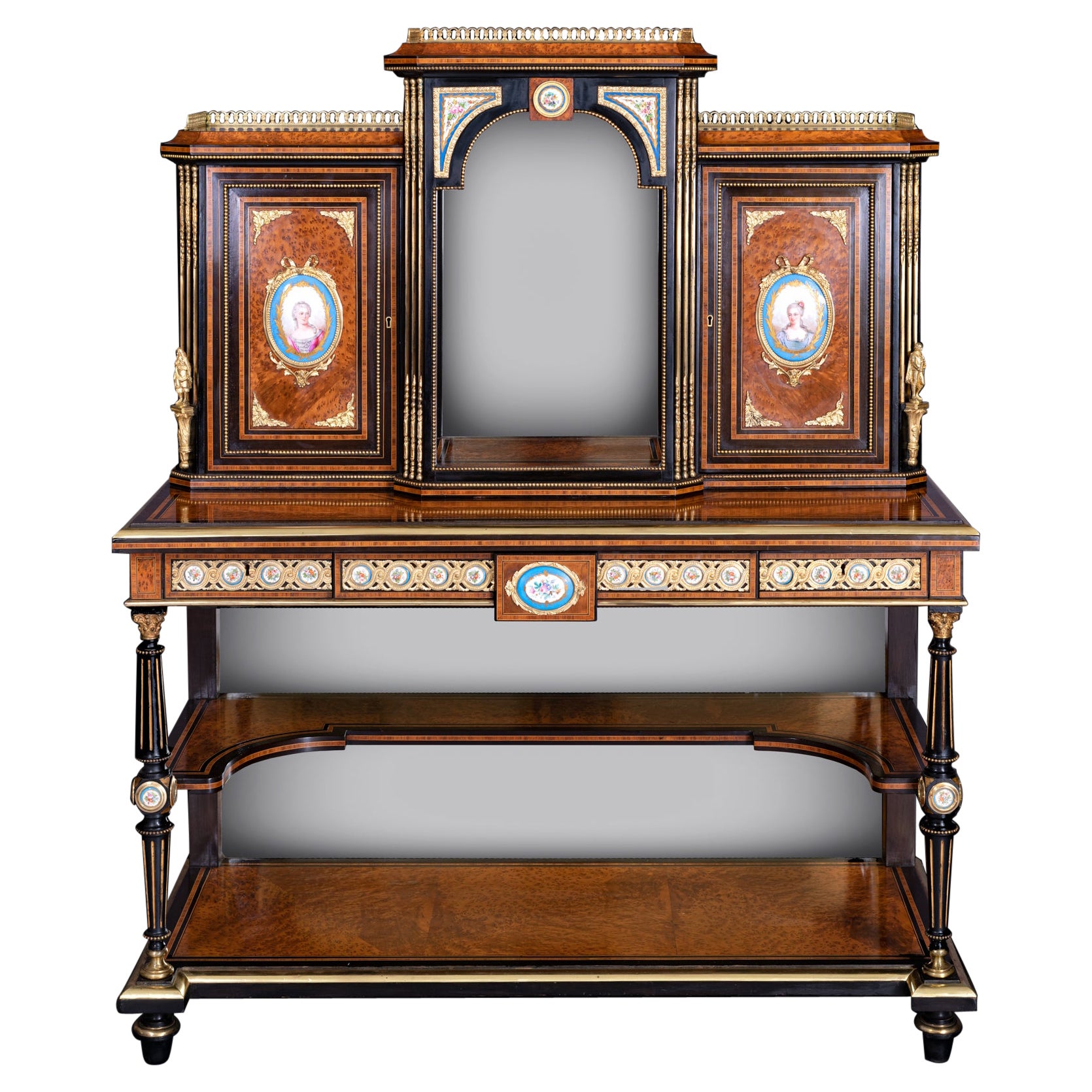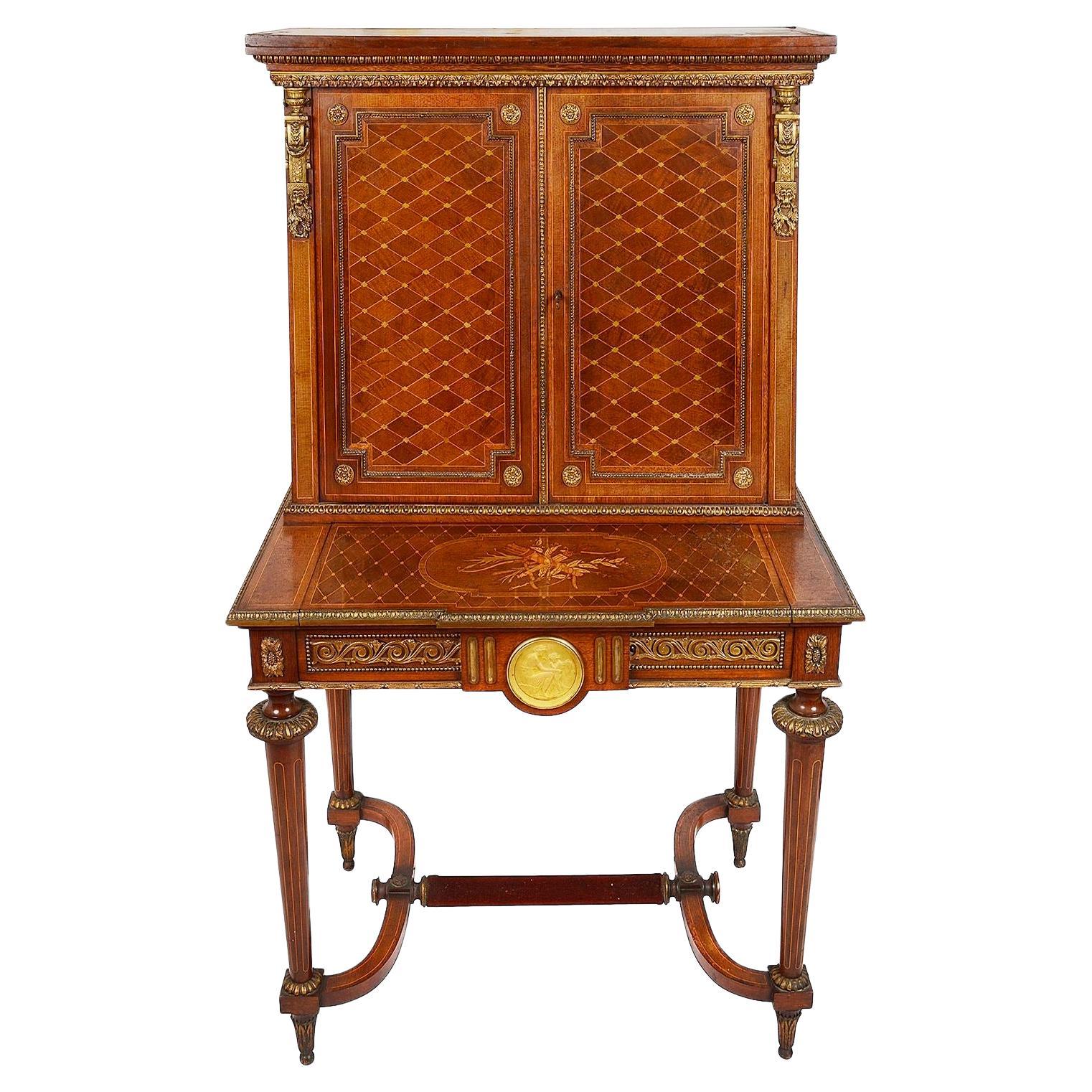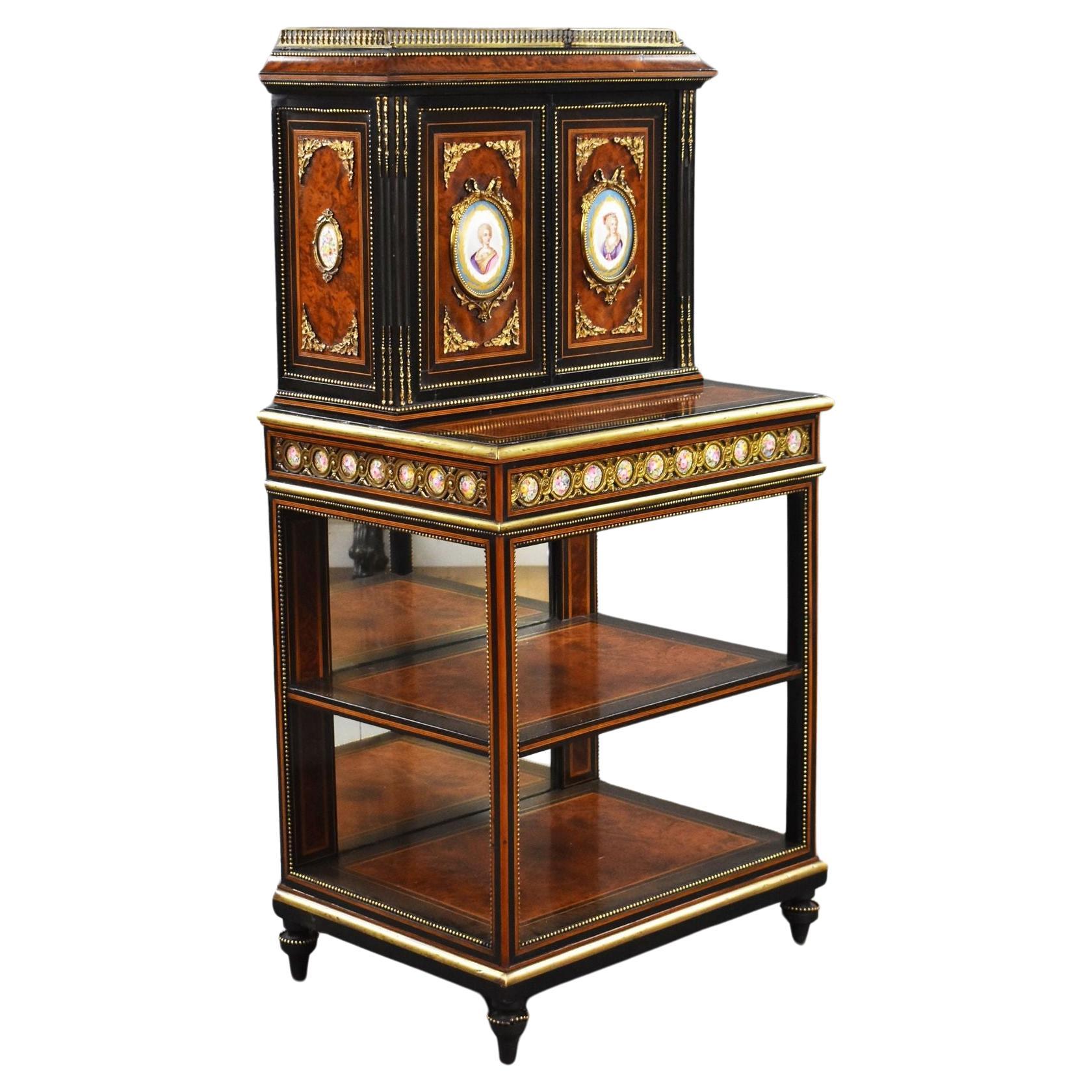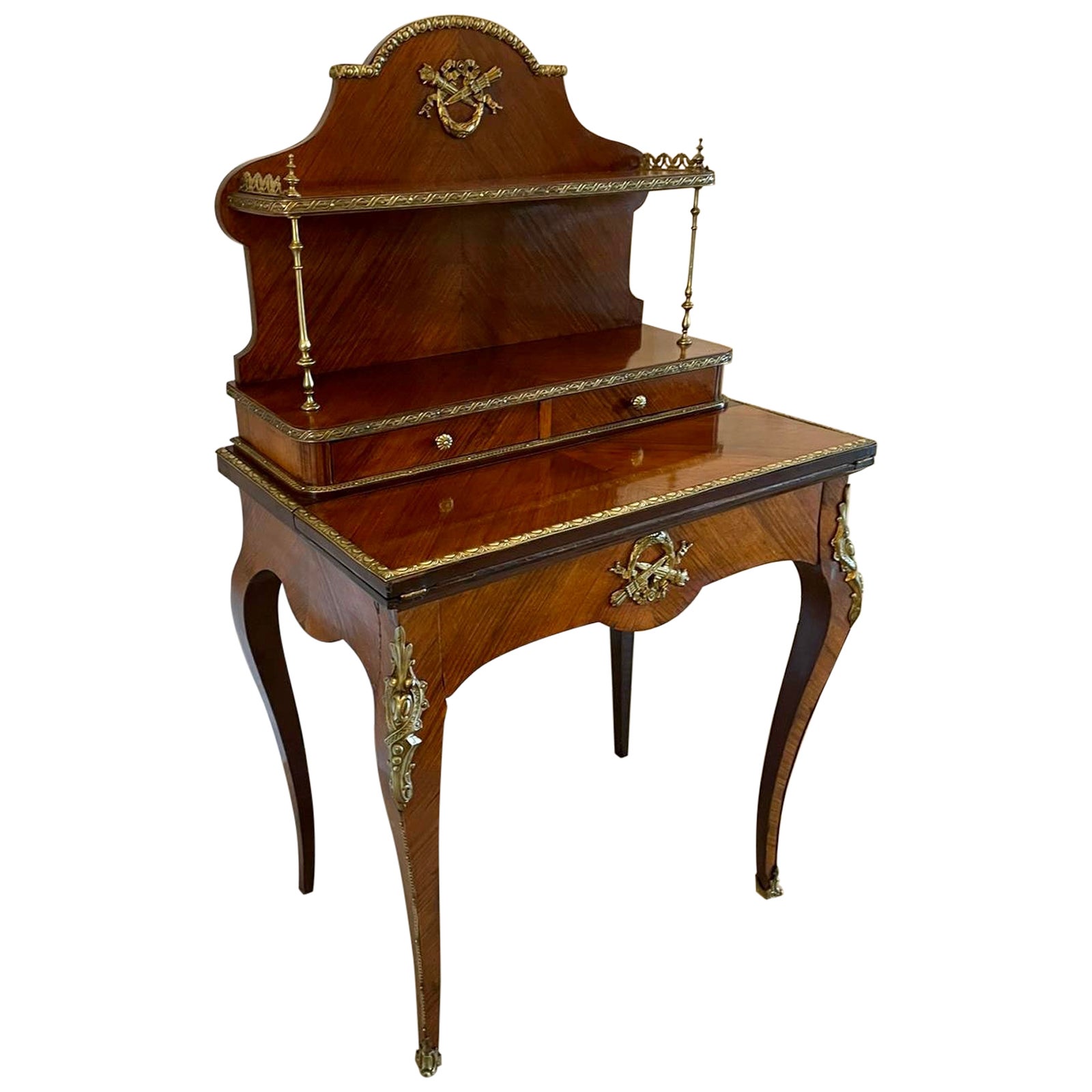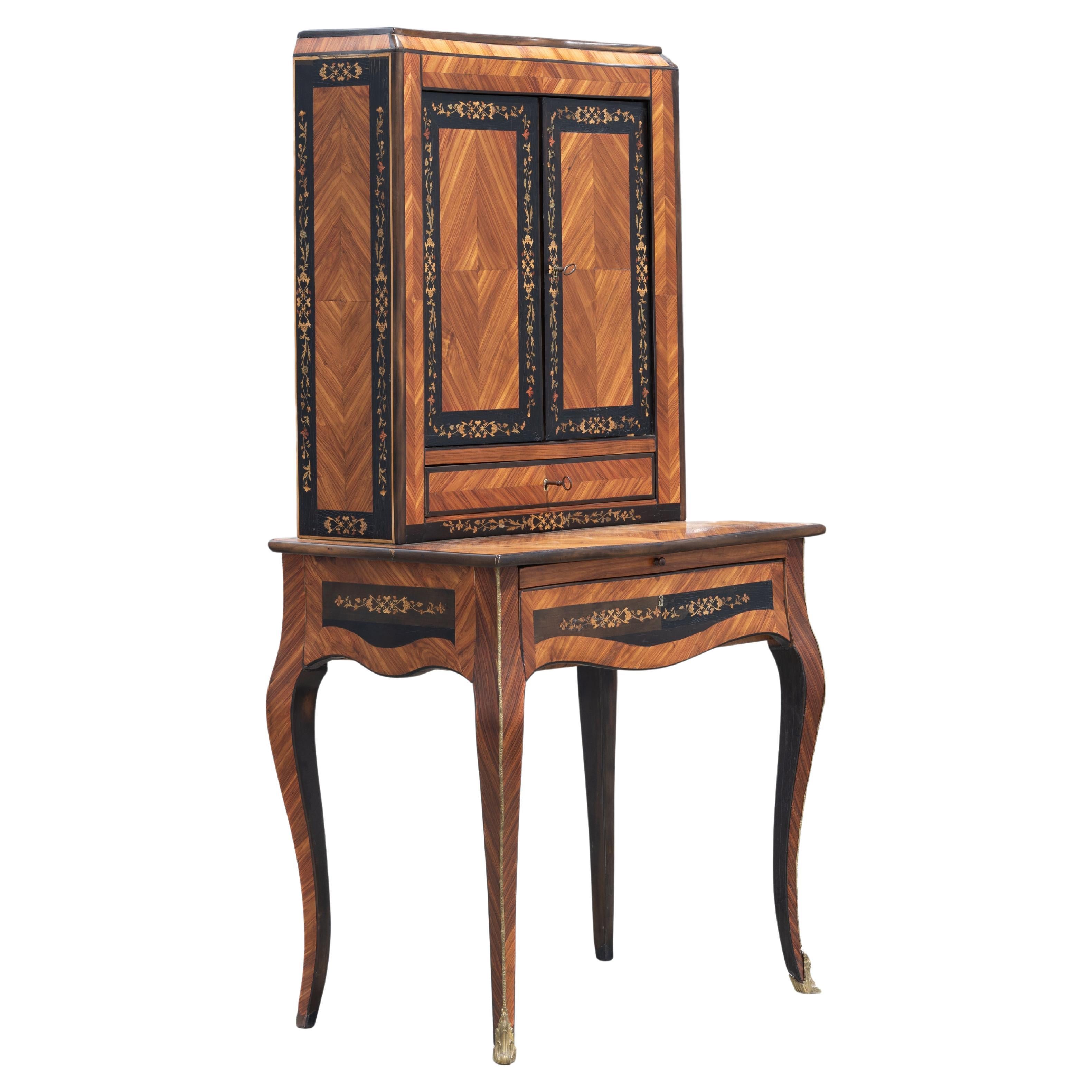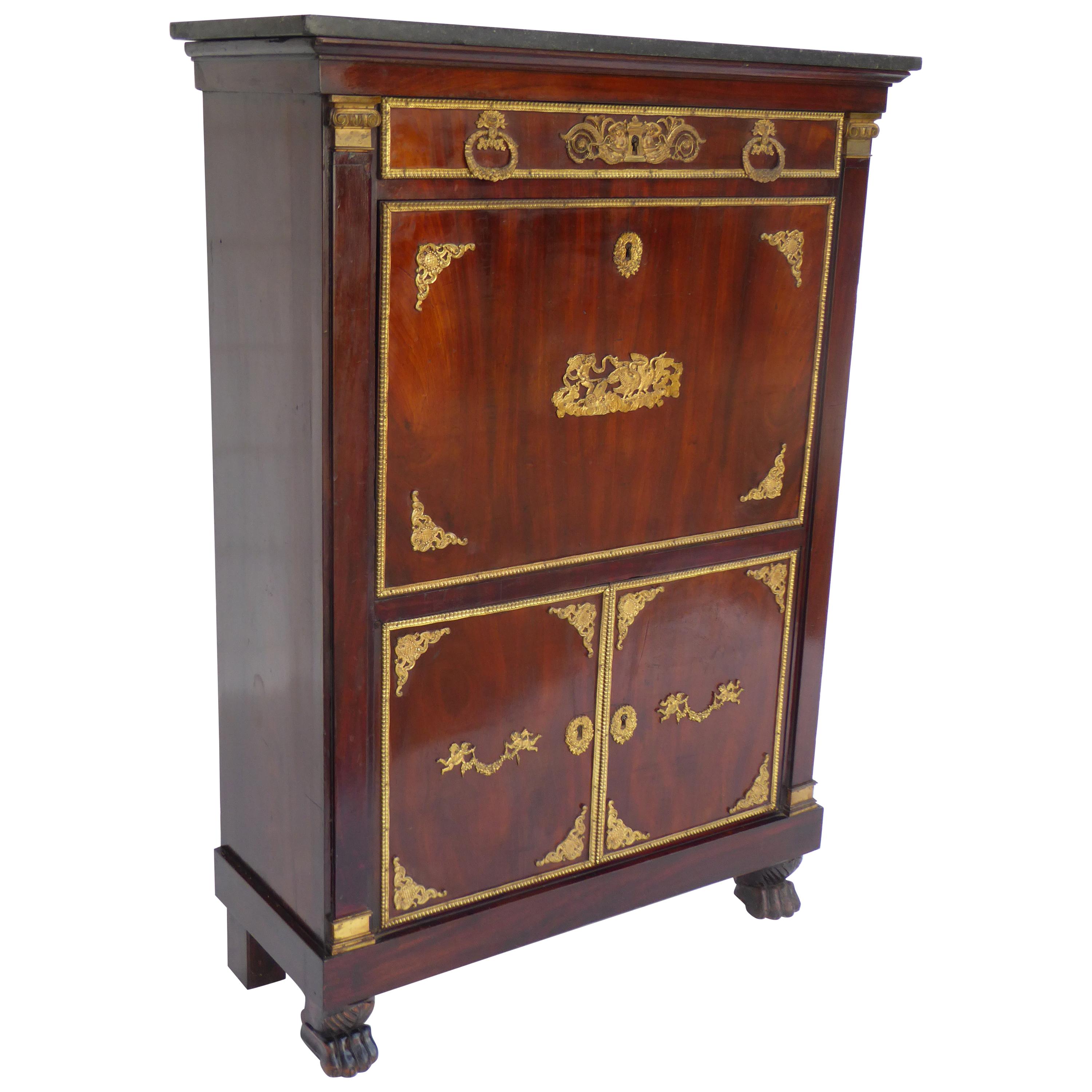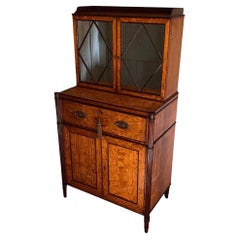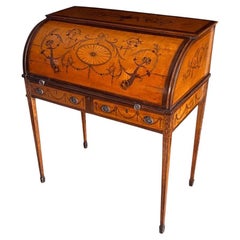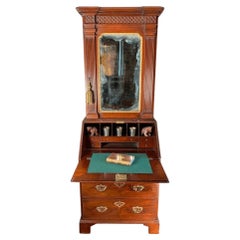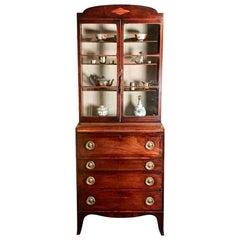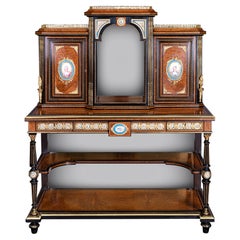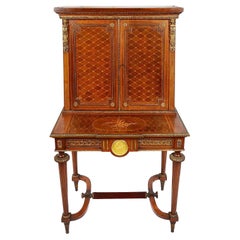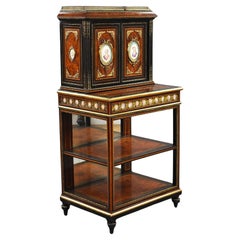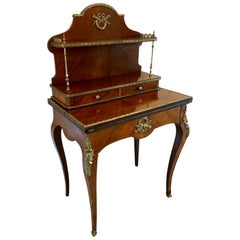Items Similar to Exceptional Regency Bonheur Du Jour Attributed to John Maclean
Video Loading
Want more images or videos?
Request additional images or videos from the seller
1 of 13
Exceptional Regency Bonheur Du Jour Attributed to John Maclean
$25,165.77
£18,500
€21,594.85
CA$35,115.49
A$38,019.84
CHF 20,213.40
MX$458,545.52
NOK 254,194.90
SEK 236,982.04
DKK 161,286.15
About the Item
An exceptional English Regency-period bonheur du jour attributed to John Maclean, ca 1810.
A fine early-19th century rosewood and brass-inlaid bonheur du jour or writing desk (or chevret) of the highest quality.
Of lovely colour and patina. In superb condition throughout.
John McLean (born 1770, died 1825) was an English furniture- and cabinet-maker and designer. He was recognised as one of the best of his era, representing the best in English cabinet making. Examples of his furniture can be found in the Victorian and Albert Museum, The California Palace of the Legion of Honor and the Library at Saltram, Devon.[1]
The origins of the McLean firm is somewhat confused by the many variations in spelling the name 'McLean'. "John MacKlane, upholder and cabinet maker in Little Newport Street, off Leicester Square" is listed in 1774.[2]
References:
Ambrose Heal, 'The London furniture makers: from the Restoration to the Victorian Era, 1660-1840' (1953).
Simon Redburn, John McLean and Son, 'Furniture History' Vol. 14 (1978).
A bonheur du jour (French, meaning "daytime delight") is a type of lady's writing desk. It was introduced in Paris by one of the interior decorators and purveyors of fashionable novelties called marchands-merciers about 1760, and speedily became intensely fashionable.[1] The bonheur du jour is always very light and graceful,[2] with a decorated back, since it often did not stand against the wall (meuble meublant) but was moved about the room (meuble volant); its special characteristic is a raised back, which may form a little cabinet or a nest of drawers, or open shelves, which might be closed with a tambour, or may simply be fitted with a mirror. The top, often surrounded with a chased and gilded bronze gallery, serves for placing small ornaments. Beneath the writing surface there is usually a single drawer,[2] often neatly fitted for toiletries or writing supplies. Early examples were raised on slender cabriole legs; under the influence of neoclassicism, examples made after about 1775 had straight, tapering legs.
Nb. A very similar bonheur du jour also attributed to John Maclean was sold at 'Tom Devenish: The Collection - Highly Important English Furniture', Sotheby’s, New York, 24th April 2008 lot 176 for US$37,000.
Further references:
An English Regency period brass-mounted library table attributed to John Maclean was sold by Christies, 18th June 2008, for £109,250.
Vis 'A Life's Devotion: The Collection of the Late Mrs T.S. Eliot', Christies London, 20 Nov 2013, A Regency brass-mounted rosewood side table - attracted to John McLean, ca 1810 - Price realised: £20,000.
See S. Redburn, John McLean and Son, Furniture History (1978) plate 38A, for a comparable chevret table, formerly at Lowther Castle.
Vis also Christie's, London, 7 December 1971, lot 67, for an unattributed chevret table of the same model but with various differences in the marquetry and design.
Nb. For comparison: The sale of an exceptionally Rare Regency Brass-Mounted Rosewood Table, sold Thomas Coulborn & Sons.
And a Fine Regency Gilded & Gilt Brass Rio Rosewood Canterbury by JOHN MCLEAN & SON - Freshfords Fine Antiques.
Further reading:
The firm of McLean and son was established in London around 1770, trading from premises in Little Newport Street, Leicester Square, until 1783. By 1790 the firm had moved to 55 Upper Marylebone Street, later expanding to occupy premises in both Pancras Street and Upper Terrace and continuing in business until 1825. Cabinet-makers of the highest calibre, patronised by such leading connoisseurs as the 5th Earl of Jersey, for whom they worked extensively at Middleton Park, Oxfordshire, and the Earl's London mansion in Berkeley Square. In Thomas Sheraton's, The Cabinet Dictionary of 1803, McLean and sons are listed among the foremost English cabinet-makers of the period, and it is some indication of the esteem in which they were held that Sheraton himself made use of one of their designs for a 'pouch table', which he illustrated in the Dictionary, (pl.65), remarking that, 'The design... was taken from one executed by Mr M'Lean in Mary-le-bone street, near Tottenham court road, who finishes small articles in the neatest manner''.
- Dimensions:Height: 41.93 in (106.5 cm)Width: 28.35 in (72 cm)Depth: 18.31 in (46.5 cm)
- Style:Regency (Of the Period)
- Materials and Techniques:
- Place of Origin:
- Period:
- Date of Manufacture:circa 1810
- Condition:Wear consistent with age and use. Of lovely colour and patina. In superb condition throughout.
- Seller Location:Lymington, GB
- Reference Number:Seller: BHA11481stDibs: LU4081121631652
About the Seller
5.0
Vetted Professional Seller
Every seller passes strict standards for authenticity and reliability
Established in 1957
1stDibs seller since 2018
37 sales on 1stDibs
- ShippingRetrieving quote...Shipping from: Lymington, United Kingdom
- Return Policy
More From This Seller
View AllFine Gillows George III Period Satinwood Secretaire Cabinet
Located in Lymington, GB
An exceptional English Sheraton-period satinwood secretaire cabinet. Attributed to Gillows.
Late-18th century, George III, ca 1790.
Measures:
H 59 1/2’’ (151 cm)
W 30’’ (76 cm)
D 19’’ (49 cm).
This small, beautifully-proportioned, and sophisticated antique writing cabinet...
Category
Antique Late 18th Century English George III Secretaires
Materials
Satinwood
Fine Chippendale Period Satinwood and Marquetry Desk
Located in Lymington, GB
A very fine Chippendale-period satinwood and marquetry desk.
English, George III-period, circa 1770.
It is rare today to find an 18th-century satinwood and marquetry-inlaid desk of this quality. (Most offered on the market are 19th/ 20th century). Major, period satinwood pieces have become almost unobtainable.
The superbly-controlled and delicate marquetry inlays are reminiscent of the fine decoration on the famous Diana and Minerva Commode by Chippendale at Harewood House...
Category
Antique 18th Century English George III Desks
Materials
Satinwood
Small Size Mid-18th Century Mahogany Bureau Bookcase or Cabinet
Located in Lymington, GB
A small-sized mid-18th century mahogany bureau bookcase / cabinet.
George II-period, ca 1740.
This diminutive Georgian bureau bookcase – als...
Category
Antique 18th Century English George II Bookcases
Materials
Mahogany
Small 18th Century Mahogany Secretaire Bookcase
Located in Lymington, GB
A small late 18th century secretaire bookcase / cabinet.
George III period, circa 1790.
Of very good rich color.
Inlaid and crossbanded throughout.
Only 2'5" wide.
Mounts are corre...
Category
Antique 18th Century Bookcases
Materials
Mahogany
Rare small early-18th century walnut bureau bookcase cabinet
Located in Lymington, GB
A rare, small, English early-18th century walnut bureau bookcase/ cabinet with a moulded swan-neck pediment. Circa 1727-1730. On the cusp of George I- into George II-period.
The bev...
Category
Antique 18th Century English George I Bookcases
Materials
Walnut
$38,088 Sale Price
23% Off
18th Century Mahogany Secretaire Bookcase China Cabinet
Located in Lymington, GB
A fine English mid-18th century mahogany secretaire / secretary / bookcase / china cabinet.
Of lovely, deep, rich color, patina and quality.
George III-period, circa 1760.
The bold, detachable, swan-neck pediment carved with 'Gothic' open fretwork, spiral rosettes and a dentil cornice.
The pediment is centred by a small platform below which is a fluted panel. The bookcase / china cabinet section with two, thirteen-pane glazed doors, with three original adjustable shelves with applied beadings for the display of china etc.
The base with a pull-out writing section fitted with small drawers, two of which have secret releases. These secret drawers are faced with blind-fret 'Gothic' tracery, and centred by a carved, shaped arch.
The base with three cock-beaded drawers, and raised on its original bracket feet which are faced with blind fret.
This fine, sophisticated and well-proportioned example of a secretaire / secretary / cabinet / desk / bookcase is remarkable for having survived in its original state including all swan-neck handles and locks.
Of superb quality, color, patination, and well figured throughout. With mahogany drawer linings: further confirmation of its superlative quality.
Measures:
42" wide (107 cm)
23" deep 58.5 cm)
95" high (241 cm) - without cartouche.
A related antique bureau cabinet...
Category
Antique 1740s English George III Cabinets
Materials
Mahogany
You May Also Like
19th Century English Bonheur Du Jour Attributed To Gillows Of Lancaster
By Gillows of Lancaster & London
Located in Dublin, IE
A very fine 19th century Burr walnut, ebonised , ormolu and porcelain Bonheur du jour, the superstructure with pierced brass galleries above an open compartment with mirrored interio...
Category
Antique 19th Century English Victorian Desks
Materials
Ormolu
19th Century French Bonheur Du Jour, circa 1880
Located in Brighton, Sussex
A very good quality late 19th Century French Bon hour du jour. The pair of doors above having wonderful parquetry inlaid diamond shaped inlay, a sliding tablet opening to write upon...
Category
Antique Late 19th Century French Louis XVI Desks
Materials
Mahogany
19th Century French Bonheur Du Jour
Located in Chelmsford, Essex
For sale is a French 19th Century Amboyna and Ebony Cabinet, with three quarter balustrade gallery, above two panelled doors set with Paris porcelain po...
Category
Antique 19th Century French Desks
Materials
Amboyna
Fine Quality Antique Victorian French Kingwood Bonheur Du Jour
Located in Suffolk, GB
Fine quality antique Victorian French kingwood bonheur du jour having a quality shaped gallery top with ornate ormolu mounts, two brass column...
Category
Antique 1860s French Victorian Desks
Materials
Kingwood
19th Century Louis XV Bonheur Du Jour Desk
Located in Austin, TX
Introducing a magnificent 19th Century Louis XV Bonheur Du Jour Desk, a true masterpiece of elegance and craftsmanship from the 19th century. ...
Category
Antique 19th Century French Louis XV Desks
Materials
Leather, Tulipwood
$2,540 Sale Price
20% Off
19th Century French Empire Escritoire
Located in Chelmsford, Essex
For sale is a fine quality, 18th century Louis XV Escritoire. The Escritoire has a drawer at the top with ornate mounts, above a fall front opening...
Category
Antique Early 19th Century French Empire Desks
Materials
Mahogany
More Ways To Browse
Antique Purveyor
18th Century English Gilt Mirror
Rio Rosewood
Lady Desk
Bonheur Du Jour Desk
Typing Desk
Regency Library Table
Brass Library Table
Antique 2 Drawer Writing Desk
Heals London
Brass Canterbury
Antique 2 Drawer Side Table With Brass
Sothebys Antique Furniture
Antique Rosewood Canterbury
Rosewood Canterbury
John Mclean
French Bonheur Du Jour Side Table
Queen Anne Antique Desk
